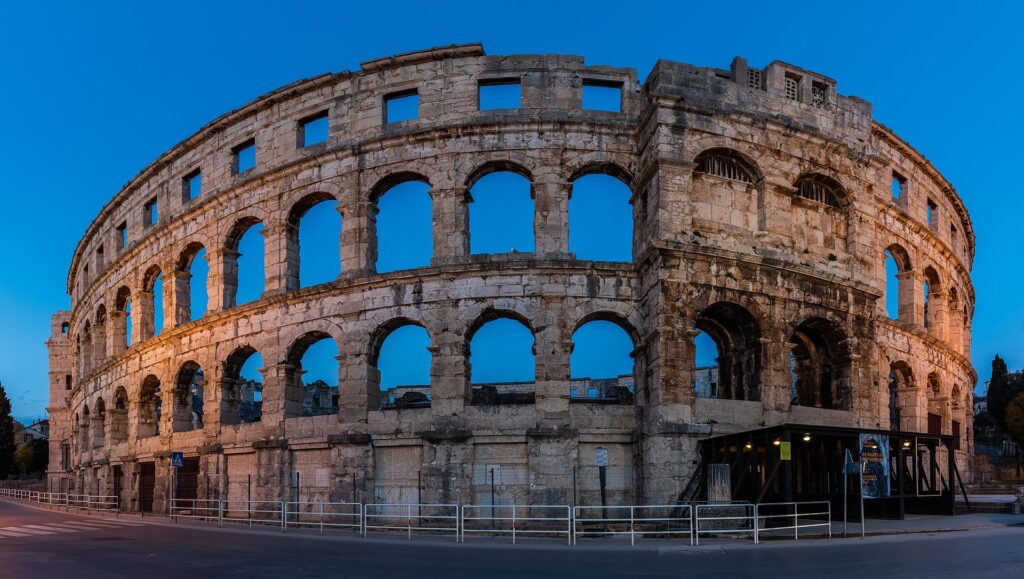On the picturesque Istrian Peninsula of Croatia lies the enchanting city of Pula, a place where history seamlessly merges with modernity. While Pula offers a multitude of attractions, none captivates the imagination quite like its Roman Amphitheatre, a majestic relic that stands as a testament to the city’s ancient past. This iconic arena, often referred to as the Pula Arena, is not only a symbol of architectural prowess but also a window into the vibrant life of the Roman Empire.
A Glimpse into the Past
Dating back to the 1st century AD, the Pula Amphitheatre is one of the best-preserved Roman arenas in existence today. Built during the reign of Emperor Vespasian, the arena’s construction was part of the larger imperial effort to entertain and control the population through elaborate spectacles, including gladiatorial contests, animal hunts, and mock naval battles.
The Design and Architecture
The amphitheatre is a stunning example of Roman engineering and architecture, showcasing the mastery of ancient builders. With an elliptical shape and dimensions of 133 meters in length and 105 meters in width, the arena could accommodate around 23,000 spectators in its prime. The distinctive two-story structure is constructed using local limestone, creating a harmonious blend of grandeur and natural beauty. The outer walls, marked by a series of arches and columns, are a testament to the intricate workmanship of Roman craftsmen.
A Journey Through History
Throughout its storied history, the Pula Amphitheatre has withstood numerous challenges, ranging from invasions to earthquakes. From the early days of gladiatorial combat to its transformation into a medieval fortress, the arena has borne witness to various phases of evolution. Despite these transformations, its fundamental architectural brilliance has remained intact, offering visitors an unparalleled glimpse into the past.
Modern-Day Relevance
Today, the Pula Amphitheatre stands not just as a historical relic but as a vibrant cultural center. The arena hosts a variety of events, including concerts, film festivals, and theatrical performances, each breathing new life into the ancient stone structure. This modern-day adaptation of the arena’s purpose mirrors its historical role as a hub of entertainment and communal gathering.
Preservation Efforts
The preservation of the Pula Amphitheatre is a testament to the value placed on cultural heritage. The arena’s maintenance and restoration have been ongoing, a collaborative effort between local authorities, preservation experts, and cultural organizations. The dedication to preserving this heritage site allows future generations to continue to marvel at its grandeur and learn from its historical significance.

The Pula Roman Amphitheatre stands as a remarkable link between the past and the present. With its awe-inspiring architecture, rich history, and modern-day relevance, the arena encapsulates the essence of Pula itself – a city that honors its roots while embracing the future. As visitors from around the world step onto the worn stones of the arena, they can’t help but feel a profound connection to the ancient world and the people who once gathered there to witness moments of both triumph and tragedy.
Comments